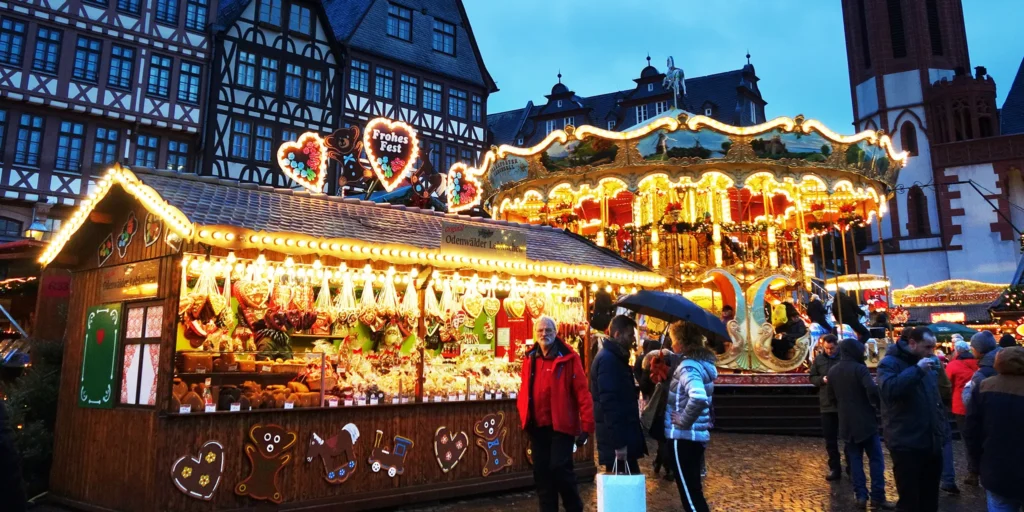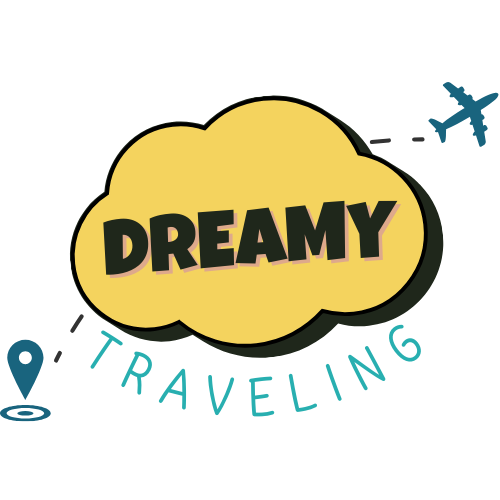The Ultimate Guide to Europe’s Best Christmas Markets (2025 Edition)
In December, walking through an old city center in Europe feels a bit like a fairy tale. The air smells of cinnamon and roasted chestnuts, the squares glow with golden light, and even the most ordinary street corner feels touched by nostalgia. From Gothic cathedrals to alpine villages, Christmas markets transform the continent into one long string of winter wonderlands. Experience the magic of the best Christmas markets in Europe, filled with festive cheer and unique traditions.
Tip: RailEurope makes it easy to combine Vienna, Prague, and Budapest—or Frankfurt and Zurich—into one festive route.



Whether you’re here for the mulled wine, handmade gifts, or the sheer romance of twinkling lights reflected in cobblestones, Europe’s Christmas markets are worth the trip. Most open in late November and run until Christmas Eve—some even into early January. But dates vary, and so do the experiences. This guide covers the best markets across Central, Western, Northern, and Southern Europe, with tips on how to plan, what to pack, and where to stay.
Central Europe: Storybook Classic Christmas Markets
If you picture Christmas in Europe, you’re probably thinking of Central Europe. Wooden stalls, snow-dusted rooftops, and centuries-old traditions define these markets. The atmosphere here feels timeless—half fairytale, half living history.
Vienna, Austria
- Few cities do Christmas quite like Vienna. The Rathausplatz Christkindlmarkt glows beneath the Gothic city hall, with choirs, skating, and enough pastry stalls to justify every extra layer. The smaller neighborhood markets—Spittelberg and Schönbrunn—feel cozier and less crowded.
Prague, Czech Republic
- Prague’s Old Town Square looks like it was built for Christmas. The market’s backdrop—Týn Church and the Astronomical Clock—makes every cup of mulled wine feel cinematic. Visit in the evening when the tree lights come on and carolers fill the square.
Krakow, Poland
- Poland’s Rynek Główny market is filled with handcrafted ornaments, wool sweaters, and pierogi stands. It’s less commercial than some Western markets and far cheaper, which makes it an ideal stop for budget travelers.
Budapest, Hungary
- At Vörösmarty Square, wooden stalls serve goulash and chimney cakes while local choirs perform nightly. The St. Stephen’s Basilica market adds a light show projected directly onto the church façade—one of the most photogenic markets in Europe.
Frankfurt & Cologne, Germany
- Germany practically invented the Christmas market. Frankfurt’s Römerberg and Cologne’s Cathedral market are classics, filled with carved toys, ornaments, and spiced wine. Trains make it easy to visit multiple cities in a single trip. Check out my guide on German Christmas Markets to learn more!
Zurich, Switzerland
- Zurich’s Christkindlimarkt in the train station is one of Europe’s largest indoor markets, anchored by a 15-meter Swarovski crystal tree. Outside, the Sechseläutenplatz market offers ice skating by the lake and mountain views in the background. This is one of the pricier markets in Europe, in my experience. Very lovely, though!
Luxembourg City, Luxembourg
- A compact but charming market spread across the old town, with wooden chalets, a Ferris wheel, and Luxembourgish specialties like Gromperekichelcher (potato fritters).
Western Europe: Christmas Cheer and Festive Elegance
Western Europe adds sophistication to the season. These markets mix tradition with spectacle—think light shows, carousels, and stylish European flair.
Strasbourg, France
- Often called the Capital of Christmas, Strasbourg’s Christkindelsmärik dates back to 1570. Timber-framed houses, Alsatian food stalls, and cathedral views create an unforgettable setting. Strasbourg is possible the most charming town in France, and wandering through the old town feels like walking through a scene in Beauty and the Beast.
Brussels, Belgium
- Brussels’ Winter Wonders festival spreads across the Grand Place with more than 200 chalets, an ice rink, and a light-and-sound show projected on centuries-old façades.
London, England
- Winter Wonderland in Hyde Park feels more like a holiday theme park—ice skating, rides, and hundreds of stalls—but smaller markets in Southbank and Greenwich offer a more local feel. London is a nice modern option in a big city, but if you’re looking for a more traditional feel, I recommend sticking with Central Europe.
Planning your trip now? Book hotels early if you want to stay close to the markets—many fill months in advance. Compare rates on Booking.com or Agoda, and don’t skip travel insurance if you’re visiting more than one country.
Watch more on YouTube.
Northern Europe: Nordic Warmth in the Cold
Farther north, you’ll find smaller, design-forward markets where handmade crafts replace mass production. Expect fewer crowds, (much) colder air, and some of the coziest Christmas settings on the continent.
Helsinki, Finland
- The Senate Square market glows under snow-covered rooftops, serving salmon soup, gingerbread, and locally made wool goods. The air smells like pine and firewood.
Copenhagen, Denmark
- Copenhagen’s Tivoli Gardens, widely considered to be the inspiration for Disneyland, turns into a Christmas wonderland each year. Wooden huts, hot gløgg, and gentle snowflakes drifting over the rides—it’s pure hygge. Don’t miss the little details here!
Gothenburg, Sweden
- Liseberg Amusement Park hosts Sweden’s largest Christmas market, with nearly five million lights. Local designers sell minimalist crafts that fit neatly in your carry-on.
Tallinn, Estonia
- Set in a medieval square surrounded by stone buildings, Tallinn’s Christmas Market feels untouched by time. The snow adds to its magic, and it’s one of Europe’s best markets for photography.
Riga, Latvia
- Riga’s main market, located by the Dome Cathedral, combines Latvian folklore, choral music, and handwoven gifts. The vibe is warm and welcoming, even in deep cold.
For these markets, pack thermal layers, touchscreen gloves, and waterproof boots. It’s going to be cold, and you’re going to need some mulled wine to stay warm, on top of a coat, hat, and gloves.
Southern Europe: Sunshine and Holiday Spirit
If the north of the north is too cold for you, you’re not alone! Christmas in Southern Europe feels different. The air is softer, the skies clearer, and the lights glow against stone plazas instead of snow.
Bolzano, Italy
- Nestled in the Italian Alps, Bolzano blends Austrian and Italian influences. Expect strudel, vin brulé, and views of snow-capped peaks.
Barcelona, Spain
- The Fira de Santa Llúcia in front of the cathedral dates back to 1786. Look for Catalan traditions like the Caga Tió—a log that “gives gifts” when hit with a stick. This is putting it delicately. You hit him with a stick, and he poops out presents. Incredible!
Sibiu, Romania
- In Transylvania, Sibiu’s Christmas Market fills the old square with lights and wooden stalls. Snow often falls, giving the city an unexpected alpine charm at a fraction of Western Europe’s prices.
These southern destinations pair well with late-December travel—milder weather, fewer crowds, and lower hotel rates.
Practical Travel Tips
- Best time to visit: Most markets open in late November and close December 24. Weekdays are quieter.
- Weather: Expect mild rain in Western and Southern Europe, steady snow in Central and Northern Europe.
- Transport: Trains connect most major markets efficiently—Omio and RailEurope are the best booking tools.
- Budget: €100–€150 per day covers hotels, meals, and local travel in most cities. Central and Northern Europe trend higher.
- What to pack: Warm layers, waterproof shoes, and power banks for all those evening photos. For a full checklist, see my 3-Week Europe Packing Guide.
- Booking: Reserve hotels early. Many markets are in city centers where rooms sell out by September.
Check out my other articles on Christmas markets:
